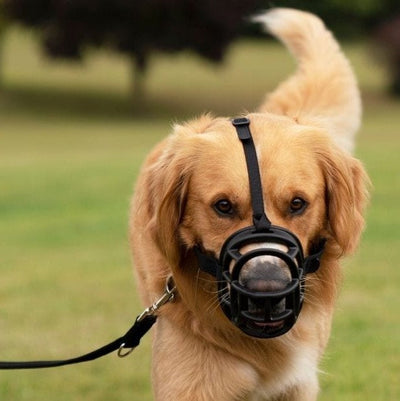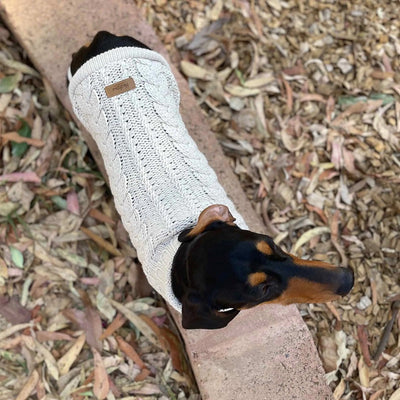Controlling your dog's bad behaviour can be a challenge, but with the right knowledge and resources, it doesn't have to be! Here are five ways to address and solve common issues like digging, chewing, car barking, stealing food and pulling on the lead.
Digging
Dogs find digging rewarding, it stimulates many of their sense, touch, smell and taste. Sometimes they smell something interesting, other times it can simply be a way of releasing that canned heat that can build up when walks and stimulation are few and far between. There is no way to completely dog proof your yard from digging, so you’re better off to provide space for the dog where it is okay to dig.
To begin with, provide your pup with designated areas where they can dig safely - this way you can reduce any damage they might cause while letting them get their digging needs out of their system. In this area try burying dry food, dog biscuits or treats such as dried liver. Regularly topping this up with new treats will encourage your pet to work in this area only. If you have limited space, consider using a children’s sand pit instead.
Chewing
When you take the time to look at dogs teeth, it's not hard to see why their mouth was made for chewing. Those strong back molars are designed to break up bones and hard tissue like ligaments and cartilage. Dogs will chew for a variety of reasons including teething, boredom and as a way to explore their environment through the sense of taste.
The best way to prevent unwanted chewing is to provide multiple items that they can chew, think toys and bones, and keep items you don’t want chewed out of the way, think gloves, shoes and children’s’ toys. If you catch your dog chewing an item that you don’t want it to, rather than yell and carry on (which is often very exciting for a dog!), calmly call the dog and exchange a treat or another toy for the item that it has been chewing. Always check the condition of any toys and if they are breaking up into pieces that can be swallowed, through the toy away.
Chewing is completely natural for dogs as well - make sure you have structured play time with plenty of chew toys and that the items you don't want them chewing on are put away out of reach.
Car Barking
Travelling with pets can be tricky sometimes. Some dogs get car sick, some dogs pant and get anxious and others bark. An effective way of solving excitement barking in the car is to ensure that the dog is restrained. Larger dogs are best suited to a harness with a clip that attaches to the seat belt clip, while smaller dogs often enjoy being elevated in dog car seats that allows them to see out the window. With car barking, secure them in place using a harness or pet seat belt to help decrease any associated anxiety or fear. This can also assist with car sickness in some dogs.
Stealing food
Taking food off tables or benches is also known by some dog trainers as counter surfing. This is a difficult behaviour to prevent, especially if your pet looks for food rewards! The very best way to stop this from happening is to not leave food on accessible areas for the dog and do not feed dogs from the table or the kitchen bench. Another tip to reduce this occurring is to feed your pet prior to preparing or eating your own meal. This will reduce the pester power of your pet!
Remember, when it comes to stealing food, try not feeding your pup off the table or kitchen bench, and also feed them before you start making your own meal to reduce temptation!
Pulling on the lead
Every dog owner love’s to take their dog for a walk but being pulled along whilst your dog attempts to choke itself on a tight lead brings no joy to either you or the dog. Pulling whilst going for walk is caused by a number of factors, including incorrect equipment, poor technique and over stimulation.
When it comes to equipment, walking harnesses or head leaders give you the best control over a dog. Use a short lead and take your dog regularly so the excitement of an infrequent walk is replaced by the familiarity of a daily routine. In fact the more you walk a dog the less likely it is to present bad behaviour in other areas due to the extra stimulation and exercise.
In summary, when going for walks make sure you use appropriate equipment like a harness or headleader along with a short lead - daily routine walks will become more familiar than infrequent ones which could lead to less excited pulling when out and about!





